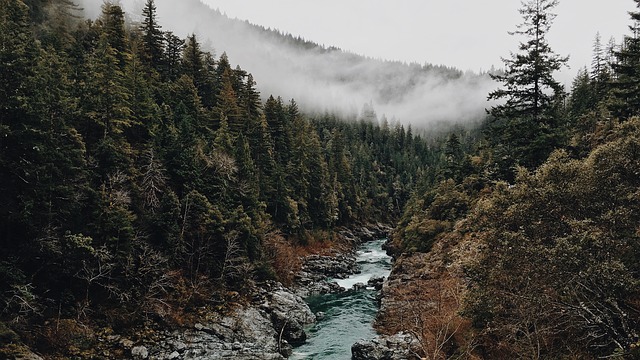
This post was written by Kathleen Guillozet of the Bonneville Environmental Foundation and Willamette Model Watershed Director. This blog was originally published on the One Tree Planted website as part of their spotlight on reforestation in Oregon.
First, a definition:
A watershed is an area of land that drains rain water or snow into one location such as a stream, lake or wetland. These water bodies supply our drinking water, water for agriculture and manufacturing, offer opportunities for recreation, and provide habitat to numerous plants and animals.
Water is integral to how trees support one another and to how people show their love for trees. Water is a storyteller that helps us understand the beautiful tale of trees and watershed health.
Did you know that trees love each other? These are human conceptions of course, but hey, we are people. Scientist Suzanne Simard has found that trees communicate with each other through belowground fungal networks, and her research also shows that trees recognize their kin, and share needed resources, including (you guessed it!) water, during lean times. In the Pacific Northwest, older Douglas-fir trees actually transfer water, carbon, and nitrogen to young, regenerating seedlings. If that is not love, then what is?

It is always heartwarming to see a child water a tree. Tree watering is one way people have shown their love for trees though the ages. In southern India, the saying, “water the plant for five years, reap coconuts for life” is used to encourage characteristics of perseverance and diligence, but is rooted in the very simple practice of stewarding trees.
If you celebrate the holidays with a Christmas tree there is a good chance it came from western Oregon. Can you smell the love? The compounds that make that smell actually have a cooling effect and promote cloud formation. Water is the lifeblood of trees, comprising around 50 percent of tree mass. Wangari Maathai, mother of the Greenbelt movement, shared her own observations about the relationship between water and trees:
“By then I understood the connection between the tree and water, so it did not surprise me that when the fig tree was cut down, the stream where I had played with the tadpoles had dried up. I profoundly appreciated the wisdom of my people, and how generations of women had passed on to their daughters the cultural tradition of leaving the fig trees in place. I was expected to pass it on to my children, too.” – Maathai (2006) Unbowed: A memoir, p. 122
Trees are intertwined in stories of watershed health, and are esteemed for their roles in filtering excess sediment, nutrients and toxins before they enter waterways, and in shading streams so they are healthy places for fish. Trees are water protectors. Did you know that over half the USA’s drinking water originates in forests? Together, trees and water can generate rainfall, mitigate global warming, prevent excessive siltation behind hydroelectric dams, and buffer people from impacts of flooding and other extreme weather conditions.

In one ancient story from the Talmud, a man encountered another man planting a carob tree, and he asked: “How long will it take to bear fruit?” “About 70 years,” the man replied. “So you think you will live long enough to taste its fruits?” The man explained, “I have found ready-grown carob trees in the world. As my forefathers planted them for me, so I plant for my children.”
In Oregon’s Willamette Basin, we are working to plant over 400,000 trees this coming winter and we need your support. The trees and waters will love you back!
Donate directly to our Oregon fund to plant trees there in early 2018, or


